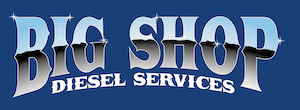Streamline Maintenance and Boost Performance with Fleet CMMS Solutions
Fleet CMMS Solutions are essential tools for modern fleet managers, helping them streamline maintenance tasks and optimize the performance of their vehicles. To assist in selecting the right CMMS provider and reaping its benefits, this blog post will cover qualifications and expertise, feature comparison across solutions, partnering with asset management companies, as well as identifying potential partners.
Choosing The Right CMMS For Your Fleet
To ensure efficient maintenance operations for your fleet, it's crucial to choose the right CMMS solution. Begin by assessing provider qualifications and expertise. Research each provider's background and experience in the truck maintenance industry to find a company with a proven track record of success in implementing solutions for fleets similar to yours. Additionally, compare features and functionalities across various CMMS solutions, considering user-friendly interfaces, fleet-specific tools, and comprehensive data analysis capabilities.
Investing in the right CMMS solution can significantly improve efficiency and reduce costs for your fleet.
Leveraging Asset Management Partners
Partnering with asset management companies can further optimize maintenance processes, improve efficiency, reduce costs, and achieve a lower total cost of ownership (TCO) for your fleet.
By collaborating with asset management partners, you can benefit from their expertise in best practices for maintaining your vehicles, access better pricing on parts or services through economies of scale, and utilize data-driven decision-making to identify trends and opportunities for improvement within your fleet's maintenance operations. When identifying potential partners, consider their experience, industry reputation, and track record in managing similar types of fleets.
Key Features Of An Effective CMMS
An efficient Computerized Maintenance Management System (CMMS) is crucial for managing heavy-duty truck fleets and ensuring their optimal performance.
Look for a CMMS that offers work order management capabilities, allowing you to create, track, edit, and communicate work orders seamlessly. It should also provide web form submission options for technicians and engineers to report issues or submit requests directly through the system. A CMMS with digital checklist generation for standardized procedures during inspections or repairs is essential. Furthermore, powerful data analysis tools that monitor fleet performance trends and identify areas for improvement are vital for making informed decisions.
Incorporating these key features into your heavy-duty truck fleet management processes will result in a smoother workflow and provide valuable insights for long-term success.
Optimizing Fleet Performance: Strategies For Asset Procurement And Maintenance Metrics Analysis
To maximize your fleet's performance, focus on analyzing maintenance, repair, and overhaul (MRO) metrics and implementing effective strategies for asset procurement.
Regularly analyze critical MRO parts/components costs to identify inefficiencies and opportunities for improvement. Establish effective strategies for asset acquisition by evaluating the total cost of ownership (TCO) over the life cycle of each asset type, determining appropriate replacement schedules, and selecting vehicles with advanced technology features that align with your fleet's operational needs and sustainability goals.
Implementing these practices alongside a reliable CMMS system is key to ensuring your trucks remain operational and on the road at all times.
Integrating Technology To Enhance Truck Fleet Maintenance
To keep up with advancements in the industry, fleet managers must integrate advanced diagnostic equipment and up-to-date CMMS solutions into their maintenance processes. These technological tools not only streamline maintenance operations but also contribute to reducing truck maintenance costs. By leveraging accurate diagnostics and efficient maintenance management systems, fleet managers can proactively identify and address issues, optimize maintenance schedules, and minimize unexpected breakdowns. This proactive approach ultimately leads to improved vehicle reliability, increased uptime, and significant cost savings in the long run.
Using appropriate diagnostic tools, such as dyno diagnostic services, allows technicians to accurately identify issues and perform necessary repairs quickly, reducing downtime and maintaining peak vehicle condition. Staying informed about emerging technologies such as telematics integration, electric vehicle adoption, and autonomous driving capabilities enables fleet managers to optimize overall operations, reduce costly repairs, minimize vehicle downtime, and embrace sustainability initiatives. By staying ahead of the curve and incorporating these advancements into their maintenance processes, fleet managers can effectively manage their fleet's health, improve efficiency, and ultimately reduce truck maintenance costs.







